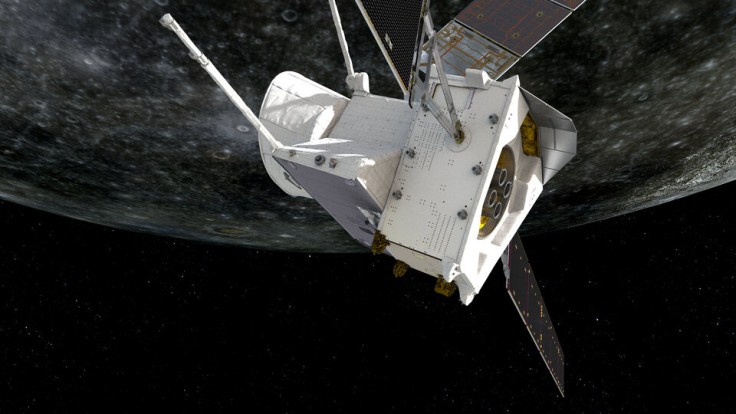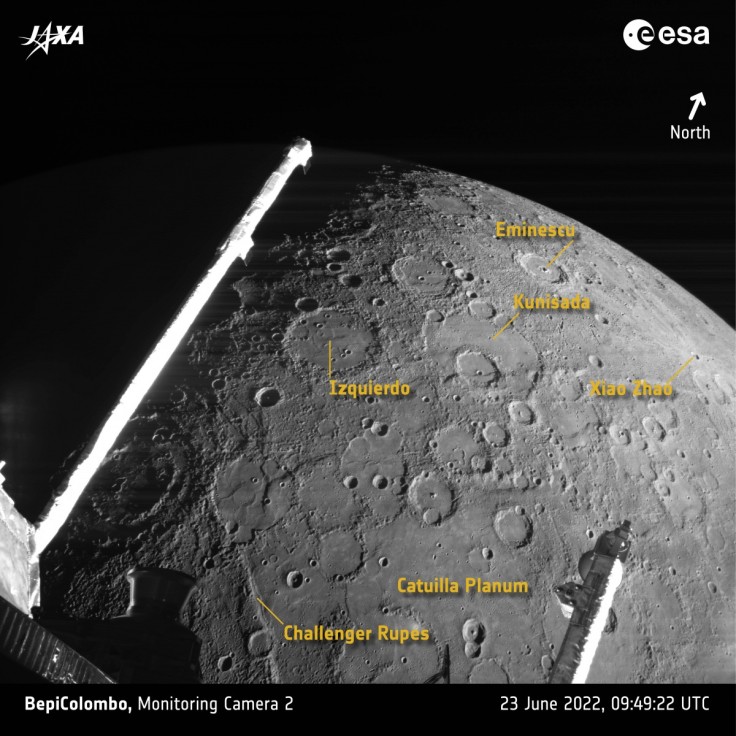
On Thursday, during a super-close flyby designed to slow the spacecraft down and alter its trajectory, the Mercury-bound probe BepiColombo took a second look at its intended target planet, The European Space Agency (ESA) said in a statement.
BepiColombo Project
ESA and the Japan Aerospace Exploration Agency (JAXA) are working together on the BepiColombo project. As the spacecraft passed Mercury in order to perform a gravity assist maneuver, it obtained this stunning image of the planet's rich geological environment.

Following the probe's initial encounter with Mercury in October 2021, BepiColombo made its second flyby of the planet on June 23.
Space.com noted that in roughly a year, there will be another flyby. BepiColombo will make its closest approach to the sun of the entire mission next month, in the meantime.
During the flyby, the probe's low-resolution monitoring cameras, which are positioned on the transfer module of the spacecraft, captured photographs of the planet.
ESA mentioned that the Mercury Transfer Module's Monitoring Camera 2 captured the image on June 23 at 09:49:22 UTC, when the spacecraft was just 920 kilometers from Mercury's surface. At 09:44 UTC, the closest approach of around 200 kilometers occurred.
Read More : Mars Express Orbiter Will Get Software Upgrade After 19 Years - Here's What You Need To Know
What Does The Captured Image Show
The distinctions between newer smooth terrains and older rocky terrains are highlighted by the lighting conditions in this image, which are different from any that NASA's MESSENGER mission to Mercury has observed for this location, as per ESA.
The cameras can take 1024 x 1024 pixel black-and-white pictures. To make the details more distinct, the image has been interpolated to 2048 by 2048 pixels. There are also some image artefacts that can be seen, like horizontal striping.
The magnetometer boom and a small portion of the medium-gain antenna are both visible parts of the Mercury Planetary Orbiter. The "terminator," or line separating the day and night sides of the globe, is generally followed by the magnetometer boom. Along with other geological features, large impact craters, such as a 200 km wide multi-ringed basin that is partially obscured by the magnetometer boom, can be seen clearly, as per ESA.
Camera Used to Capture This Photo
The space agency said that the Mercury Transfer Module is equipped with two science orbiters that will study all facets of the mysterious Mercury, from its core to its surface processes, magnetic field, and exosphere, from complementary orbits. This will help us better understand the formation and evolution of a planet that is in close proximity to its parent star.
According to ESA's BepiColombo project scientist Johannes Benkhoff, the two orbiters collectively contain 16 scientific equipment, although only around 60% of those were functioning during the 48 hours surrounding the closest approach. High-resolution cameras and the rest cannot be used in the cruise configuration because they are either covered by the transfer module or the sunshield of the spacecraft.
The spacecraft's magnetometers and particle detectors were turned on during the flyby, according to Benkhoff, and they will probably produce useful scientific data regarding the solar wind nearby Mercury.









